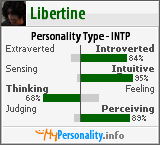Thursday, August 4, 2005
Star Trek and Social Commentary
I’ve been a Star Trek fan since its first inception in 1966, when I was eight years old. I continued to enjoy the show in reruns as I grew up, then in new spinoff series, beginning in 1987 with Star Trek: The Next Generation.
One of the things I’ve always liked best about the various Trek series was the way serious issues of our time were covered, disguised in fictional settings. Three favorite episodes from the Next Generation series that meet this criteria are “Up the Long Ladder”, “Who Watches the Watchers”, and “The Chase”.
In “Up the Long Ladder”, the Enterprise deals with two human colonies on different planets. The first, a group of Irish people living in a back-to-nature society, is in danger because their sun has become unstable. Picard brings them all aboard, then scouts the sector for a new planet for them to settle on. They come upon a planet inhabited by other human settlers whose ancestors left Earth approximately the same time as those from the Irish planet.
This planet has a stable sun, but the population consists entirely of clones from a mere five survivors when the original colony ship crashed on the planet. The population is suffering from “replicative fading”, as the same five original people have been cloned over and over again. Apparently, none of the original five had had children together, and by the time the Enterprise meets them, they’ve developed a revulsion at the very idea of sex.
To make a long story short, the solution is to merge the Irish settlers and the clones on the clone planet. In order to improve the gene pool for the new combined colony, Picard recommends that monogamy be abolished and that each woman should have at least three husbands.
As a libertine, I enjoyed this episode for the matter-of-fact and practical way Picard solved the problem and that he was able to see “out of the box” beyond one of our society’s sacred cows.
The next episode, “Who Watches the Watchers”, deals with ideas of God and religion. As the episode begins, the Enterprise is sent to a planet to help an anthropological observation team repair some defective machinery. A proto-Vulcan race, living at a Bronze Age level, is native to the planet and is the focus of the team’s work.
While the Enterprise’s away team is assisting the group at the observation post, the cloaking device hiding the post and its technology from the planet’s natives malfunctions and goes offline. The people on the planet are exposed to the observation team and the Enterprise crew -- one man is critically injured and has to be taken to the Enterprise to save his life.
The planet’s natives, the Mintakans, mistake Picard and his crew for gods, having witnessed technology inconceivable to them. Picard takes the Mintakan leader aboard the Enterprise, where he manages to convince her of his humanity, telling her that anyone witnessing technology sufficiently advanced to their own would naturally see it as magic and conclude that those having it were gods.
Others have suggested that something similar could have happened in Earth’s ancient history; that the “miracles” spoken of in the Bible were actually demonstrations of superior technology from a visiting alien race. It’s something to think about….
The third episode, also having an underlying religious theme, is “The Chase”. In this episode, Picard meets up with one of his old professors, an anthropologist, who has found related strands of fossil DNA on different planets in the galaxy.
To make a long story short, the Enterprise, along with crews from Klingon, Romulan, and Cardassian ships all chasing the same DNA fragments, end up on the planet where it all originated. They find a place where a recording has been left for those who have solved the riddle and visit the planet. It said:
"You're wondering who we are ... why we have done this ... how it has come that I stand before you, the image of a being from so long ago. Life evolved on my planet before all others in this part of the galaxy. We left our world, explored the stars, and found none like ourselves. Our civilization thrived for ages - but what is the life of one race, compared to the vast stretches of cosmic time? We knew that one day we would be gone, and nothing of us would survive - so we left you. Our scientists seeded the primordial oceans of many worlds, where life was in its infancy. The seed codes directed your evolution toward a physical form resembling ours: this body you see before you, which is of course shaped as yours is shaped, for you are the end result. The seed codes also contain this message, which is scattered in fragments on many different worlds. It was our hope that you would have to come together in fellowship and companionship to hear this message - and if you can see and hear me, our hope has been fulfilled. You are a monument, not to our greatness, but to our existence. That was our wish: that you too would know life, and would keep alive our memory. There is something of us in each of you, and so, something of you in each other. Remember us."
In other words, all the seemingly dissimilar planetary races are not so dissimilar after all. As well as having implications that shatter our idea of how God created life on Earth, it shows us that the minuscule differences between human beings (race, nationality, sex, etc) that people in the 21st century fight about, really don’t amount to a hill of beans.
Thoughts?
Subscribe to:
Post Comments (Atom)




No comments:
Post a Comment